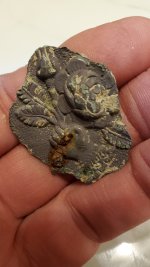Vladio
Jr. Member
- Mar 5, 2013
- 54
- 21
- Detector(s) used
-
Garrett 250, AT Pro, ProPointer &
Bounty Hunter (kids)
- Primary Interest:
- All Treasure Hunting
This is my first try. I'm using a 13.8 volt power supply that's out of a 1980's retail car radio display. 10-15 amps. I'm trying to clean a horse shoe. The waters getting hot as is the power supply. Just wondering if this is normal.




